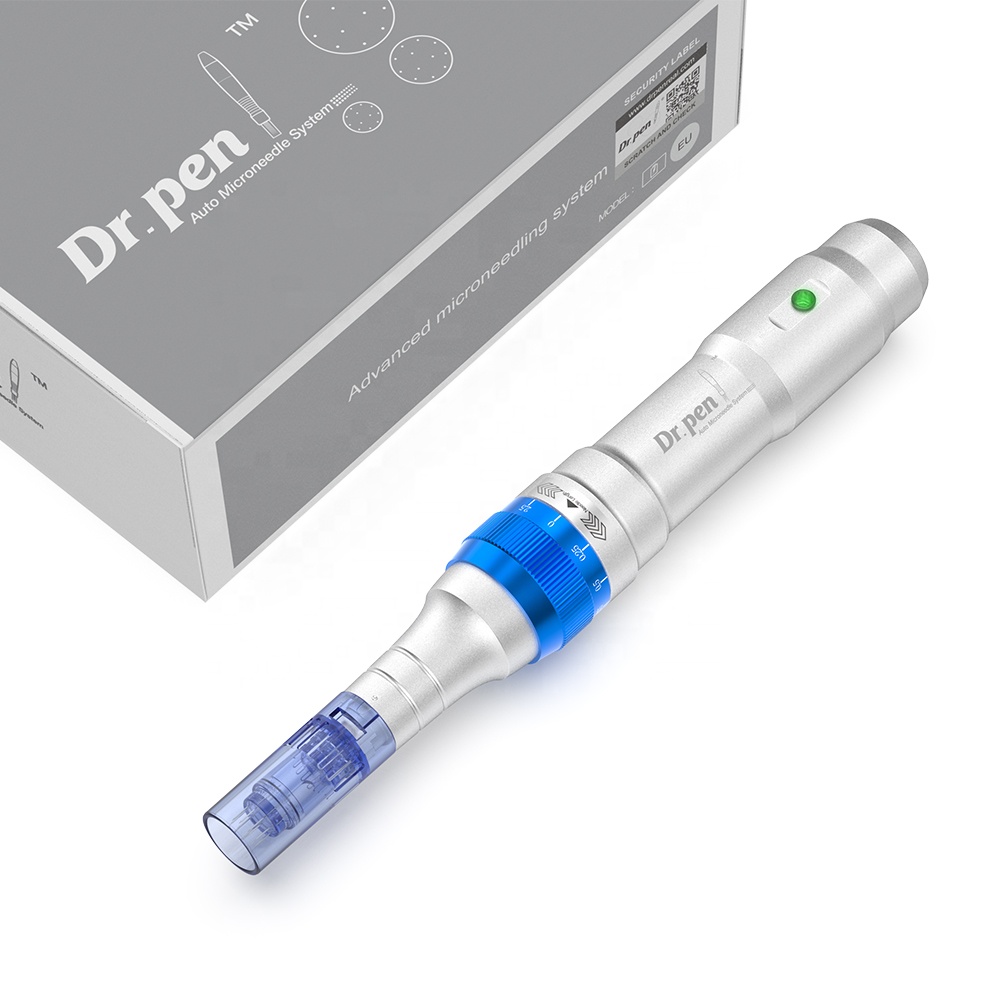Dermapen Microneedling Treatment | BuyDrpen
Dermapen Microneedling Treatment | BuyDrpen
What is Dr. Pen?
Dr. Pen is a motorized pen-like microneedling device used by a medical or skin-care professional to improve skin tone and texture. Microneedling with the Dermapen can improve fine lines and wrinkles, scars (especially acne scars), stretch marks, hyperpigmentation, and large pores.
It’s used mostly on the face, but the Dr. Pen can treat skin anywhere on the body, including the neck, chest, stomach, and thighs.
What are the pros and cons of Dr. Pen?
Pros
Dr. Pen can be adjusted for your skin thickness and concerns.
The fine needles on the Dr. Pen create precise pinpricks, making them less likely to cause long-term texture damage than some other microneedling devices.
After microneedling with Dermapen, your skin can absorb serums and other skin-care products more effectively.
Cons
Although the Dr. Pen is considered safer than other microneedling devices, it can cause scarring if used improperly by an inexperienced provider.
While microneedling is considered safe for all skin types and tones, people with olive, brown, and dark skin are at a higher risk of pigmentation issues if damage is caused.
People with active acne, eczema, psoriasis, cold sores, or warts—or who are currently taking Accutane or blood thinners—should avoid any kind of microneedling, including the Dermapen.
How does Dr. Pen microneedling work?
Short, fine needles on the tip of the device puncture the epidermis and dermis, creating micro injuries that stimulate a natural wound-healing response. Over the coming weeks, this increases cell turnover and boosts elastin and collagen production so that your skin repairs and renews itself. This technique is also known as collagen induction therapy.
Because Dr. Pen results rely on your skin’s natural regeneration process, providers recommend a series of three to five treatments, spaced four to six weeks apart, for best results. This allows time for the skin cells to turn over and for new collagen to be produced.
What happens during a Dr. Pen treatment?
Dermapen microneedling treatments usually last no longer than an hour. Your provider will first apply a numbing cream to the treatment area. Once you’re numb, they’ll press the Dermapen device to your skin and move it across the full treatment area as the motorized needles stamp into the top and middle layers.
Most people report feeling no pain during the procedure, but you may experience pinpoint bleeding, particularly in areas where the needles penetrate more deeply.
When PRP derived from your own blood is applied topically after microneedling, the treatment is known as a Vampire Facial.
Home can you care for your skin after a Dr. Pen treatment?
Immediately afterward, you may have some swelling or redness. This should clear up within a few hours, but you’ll want to be careful with your skin for a few days. With needled microchannels open, your skin will be particularly vulnerable.
Here’s how you can really take care of your skin for the first few days after your treatment.
Avoid direct sun exposure. While it’s super-sensitive, your skin may be more prone to sun damage. Reach for a physical sunscreen with titanium dioxide or zinc oxide instead of a chemical one, which may seep into your skin.
Go without makeup for at least 24–48 hours. Anything you apply may penetrate your pores, and previously used brushes and applicators can introduce bacteria.
Keep your skin care simple. Active ingredients (like alpha hydroxy or beta hydroxy acids and retinoids) can cause irritation, so it’s best to stick to a gentle cleanser and hydrating moisturizer unless your provider recommends otherwise. To boost results, they may OK an antioxidant serum or a skin-care product with collagen-stimulating peptides. Your skin will more readily absorb anything you apply.
Cool it on the exercise. Working up a sweat can aggravate your skin, and you run the risk of stirring up infection-causing bacteria.
What are the risks of Dr. Pen treatments?
With the correct technique, Dermapen risks are low. However, using needles of inappropriate depth or exerting excess pressure in microneedling treatments can leave long-term marks, including scarring or hyperpigmentation.
The U.S. Food and Drug Administration (FDA) also recognizes the risk of damage to underlying tissue, including nerves and blood vessels, and identifies cross-contamination as a concern. A new, sterile needle cartridge should be used for every treatment, to mitigate the risk of infection.
Tip: Microneedling may trigger cold sores. Tell your doctor if you’re prone to cold sores so you can start taking an antiviral medication a few days before your treatment.
Dr. Pen VS. derma roller: What’s the difference?
A derma roller is a manual handheld device used to roll microneedles of fixed size over the skin, while the Dermapen has the ability to adjust needle depth and rapidly punctures the skin vertically as the device moves across the treatment area.
Derma roller treatments carry a higher risk of scarring, hyperpigmentation, and uneven skin texture.
The Dermapen’s small, 12-needle tip provides precision and allows different areas of the skin to be treated to different depths. The tips are also single-use, ensuring new, sterile needles for every treatment.




